Very Short Answer Questions: How Nature Works in Harmony | Science Curiosity Class 8 - New NCERT PDF Download
Q1: Name some National Parks and sanctuaries.
Ans: Bharatpur Sanctuary, Lockchao Wildlife Sanctuary, Kaziranga National Park and Satpura National Park.
Q2: What is the major threat to the survival of organisms?
Ans: Habitat destruction, particularly through activities like deforestation, is a major threat to the survival of organisms.
Q3: What do you mean by deforestation?
Ans: Deforestation refers to the clearing or cutting down of forests for other land uses, leading to the reduction of forest cover.
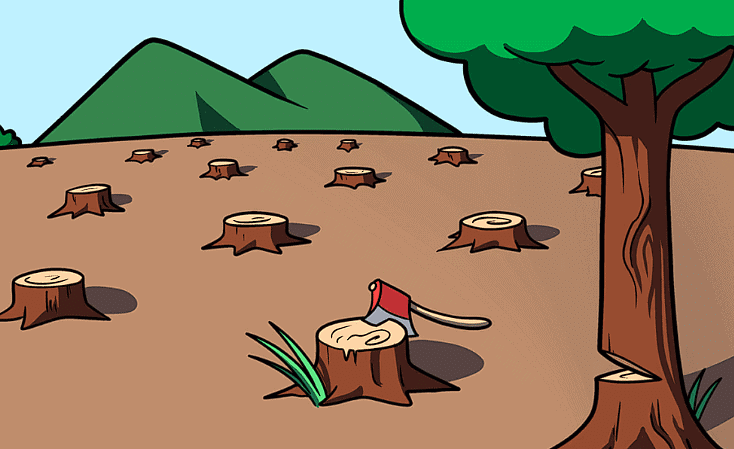
Q4: Name some products which we get from forests.
Ans: Fruits, timber, medicines, rubber, and honey are some products obtained from forests.
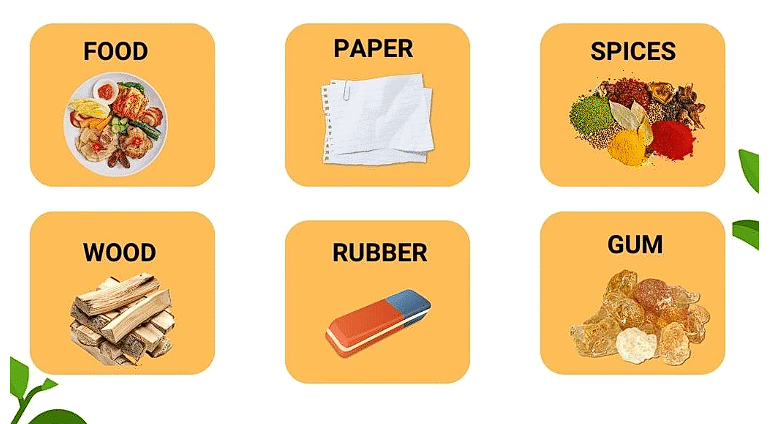
Q5: What is sanctuary?
Ans: A sanctuary is an area designated for the protection of animals and their habitats, where human disturbances are minimized.
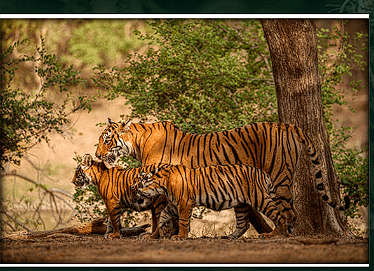
Q6: What are National Parks?
Ans: National Parks are areas set aside for the conservation of wildlife and natural resources, allowing animals to thrive in their natural habitats.
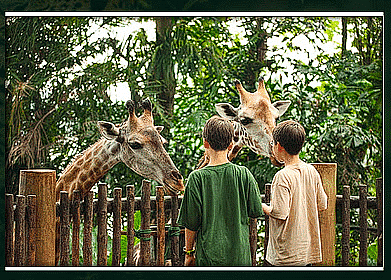
Q7: What are migratory birds? Give Examples
Ans: Migratory birds are those that travel long distances between their breeding and non-breeding habitats. Examples: Surkhab, Bar headed Goose, Arctictern, Siberian cranes, etc.
Q8. What is a habitat?
A habitat is the place where an organism lives and finds the conditions it needs to survive.
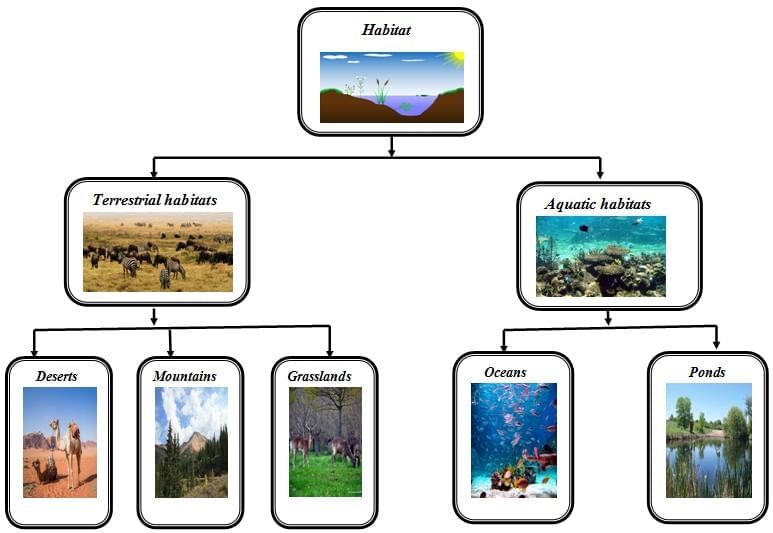
Q9. What are biotic components of a habitat?
Biotic components are the living things in a habitat, such as plants, animals, and microbes.
Q10. What are abiotic components of a habitat?
Abiotic components are the non-living things in a habitat, such as air, water, soil, sunlight, and temperature.
Q11. Why do different habitats have different organisms?
Different habitats have different conditions, so organisms adapt to survive in the specific conditions of their habitat.
Q12. What is a population in ecology?
A population is a group of organisms of the same species living in a specific area at a given time.
Q13. What is a community in ecology?
A community is all the different populations of living organisms that live and interact in the same habitat.
Q14. Why is diversity important in a habitat?
Diversity reduces competition and helps maintain balance by giving different organisms different roles.
Q15. What is pollination?
Pollination is the transfer of pollen from the stamen to the carpel of the same or another flower to help form fruits and seeds.
Q16. What is an ecosystem?
An ecosystem is a system made of living and non-living components in an area and all the interactions among them.
Q17. Who are producers in an ecosystem?
Producers are organisms, mainly plants, that make their own food by photosynthesis.
Q18. Who are consumers in an ecosystem?
Consumers are organisms that obtain energy by eating plants or other animals.
Q19. What are decomposers?
Decomposers are organisms like fungi and bacteria that break down dead matter and recycle nutrients into the soil.
Q20. What is a food chain?
A food chain is a simple sequence that shows who eats whom in an ecosystem.
Q21. What is a food web?
A food web is a network of interconnected food chains showing complex feeding relationships.
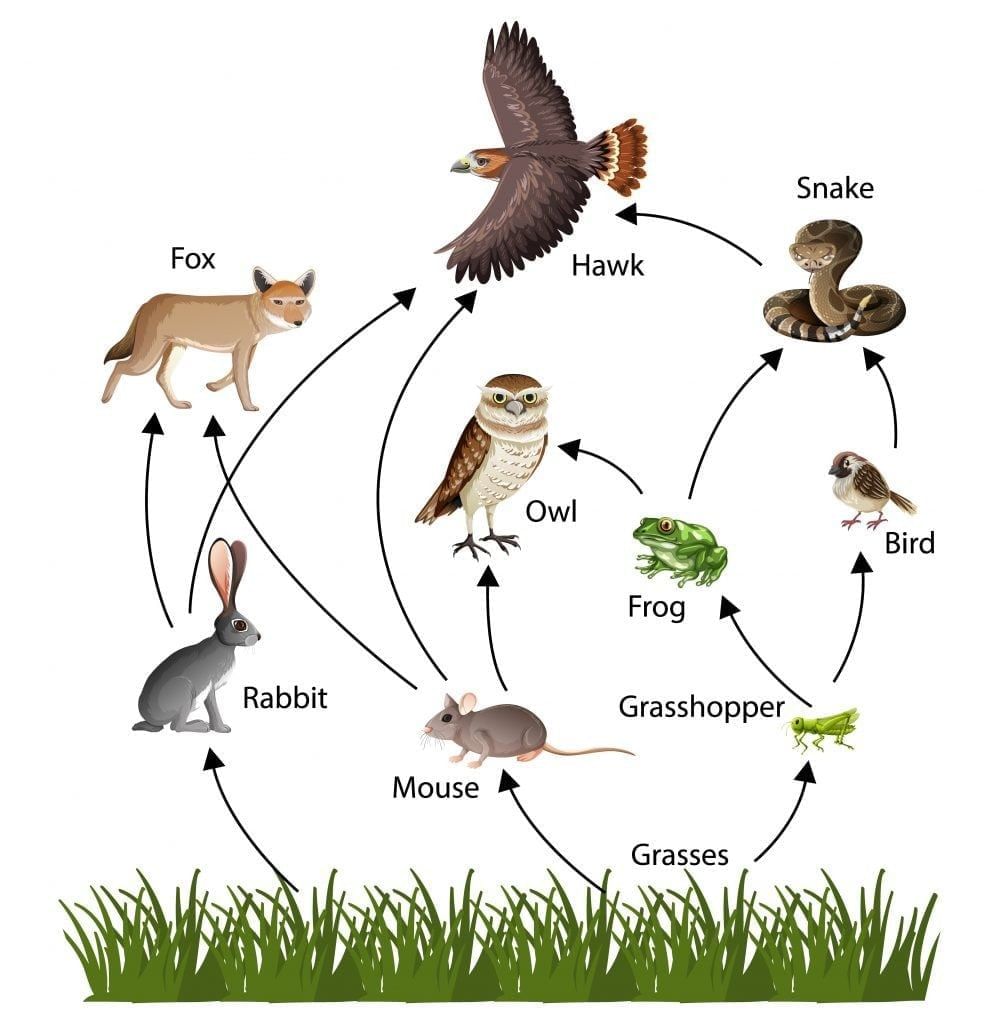 Food Web
Food Web
Q22. What is a trophic level?
A trophic level is the position an organism occupies in a food chain, such as producer, herbivore, or carnivore.
Q23. Why is the ecological pyramid wider at the base?
The pyramid is wider at the base because producers are most numerous and energy decreases at higher levels.
Q24. How do organisms interact with abiotic components?
Organisms use abiotic components like sunlight, water, air, and soil for processes such as photosynthesis, respiration, and growth.
Q25. What is mutualism?
Mutualism is a relationship where both organisms benefit, like bees getting nectar while helping flowers pollinate.
Q26. What is commensalism?
Commensalism is a relationship where one organism benefits and the other is unaffected.
Q27. What is parasitism?
Parasitism is a relationship where one organism benefits while the other is harmed.
Q28. How can removing fish affect pollination around ponds?
Removing fish can increase dragonflies that eat pollinators, reducing pollination of nearby plants.
Q29. What is one effect of deforestation on animals like elephants?
Deforestation can force elephants to move into farms and villages in search of food and shelter.
Q30. Why are decomposers important for nature’s balance?
Decomposers recycle nutrients and prevent the buildup of dead materials and waste.
Q31. What are protected areas and why are they important?
Protected areas are regions set aside to conserve wildlife and habitats, helping save biodiversity for the future.
Q32. Why are mangroves like the Sundarbans valuable?
Mangroves like the Sundarbans protect coasts from storms, store carbon, support unique wildlife, and provide vital ecosystem services.
|
59 videos|235 docs|13 tests
|
FAQs on Very Short Answer Questions: How Nature Works in Harmony - Science Curiosity Class 8 - New NCERT
| 1. What is meant by "nature works in harmony"? |  |
| 2. How do ecosystems demonstrate harmony in nature? |  |
| 3. What role do humans play in maintaining harmony in nature? |  |
| 4. What are some examples of natural harmony being disrupted? |  |
| 5. Why is biodiversity important for the harmony of nature? |  |
















